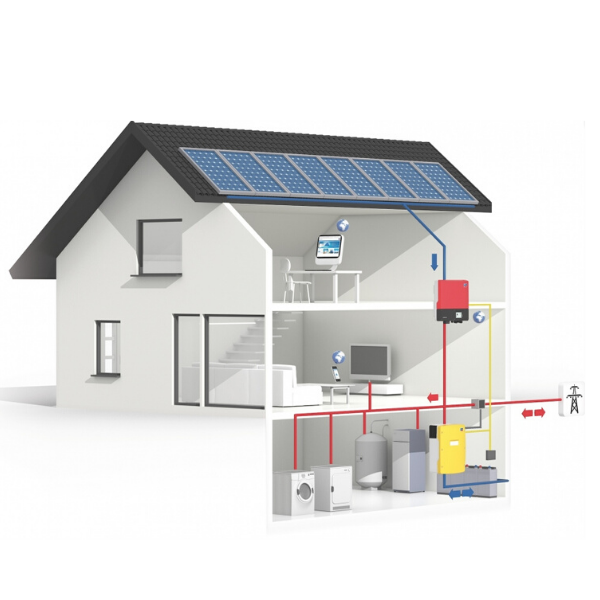How does Solar Energy work?
Learn how Solar Energy works with our easy-to-understand explanation below.
A standard grid connected solar energy system is composed of the following major elements:
1. Solar Panels (Photovoltaic (PV) Modules)
Solar cells work by converting visible light into electricity through a process called the photovoltaic effect. Photons in visible light hit the solar cell and are absorbed by the semi-conducting material (which in most cases is silicon), creating an electron hole, which another electron must fill. This causes movement in the electrons thus creating a flow of electricity, also called direct current (DC).
2. Solar Energy Inverter
The electricity generated by the solar panels needs to be converted to match the every day electricity supply, 230 Volt alternating current (AC). To do this, an inverter is used to filter the power to the correct values so it can be used for day-to-day power needs in your home. Any excess energy not used by your home is fed back into the grid.
3. Switchboard & Bi-directional Meter
The AC flows through your switchboard for use in your home. Your new bi-directional metering device records exactly how much energy you feed into the grid as well as the electricity you draw from the grid.
4. Electrical Grid
During the day unused AC will be fed into the grid, at night electricity will be drawn from the main electrical grid.
Metering and System Performance for your home
Metering Requirements
In order to record the imported and exported energy your solar system produces a bi-directional meter is required in most states including WA. This Is called “Net” Metering. Other States require “Gross” metering which is basically two standard meters, one records export and the other imported energy.
After you have applied for the Renewable Energy Buyback Scheme from your Energy Provider, your Energy Provider will have determined whether they will need to change the meter at your property. They will send someone out to change the meter. Sometimes the meter will be changed without you being notified.
Please look for a small green “Import/Export” Sticker on your new or reprogrammed meter. This will confirm that it is ready for Grid connection of your new solar energy system.
System performance
The performance and output of your solar system is influenced by several factors – the directions the panels are facing, the angle and tilt of the panels, the geographic location of your house, the related climate conditions, objects that cause shading and the amount of dust and bird droppings on your panels.
You solar system will be at its peak in summer, when the days are long and the weather is sunny. Your solar system will be at its low in winter, when the days are short and the weather is cloudy and rainy.
We provide prior to purchase, a full solar production estimate and seasonal system performance output graph.
The table below shows the average kilowatt hours (kWh) of energy that a 1 kW size solar system can generate per day in various parts of Australia. The calculated estimated performance of your system is based on your specific set up – panel direction, tilt, geographic location etc.
| Location | Best Month kWh per day |
Worst Month kWh per day |
Annual Average kWh per day |
|---|---|---|---|
| Perth | 5.40 | 2.93 | 4.40 |
| Brisbane | 4.61 | 3.34 | 4.04 |
| Canberra | 5.32 | 2.76 | 4.22 |
| Darwin | 5.11 | 3.54 | 4.47 |
| Hobart | 4.6 | 2.14 | 3.54 |
| Sydney | 4.83 | 2.82 | 3.94 |
| Melbourne | 4.59 | 2.22 | 3.58 |
| Adelaide | 5.72 | 2.51 | 4.25 |
| Alice Springs | 5.19 | 4.21 | 4.81 |
| Cairns | 4.44 | 3.18 | 3.86 |




